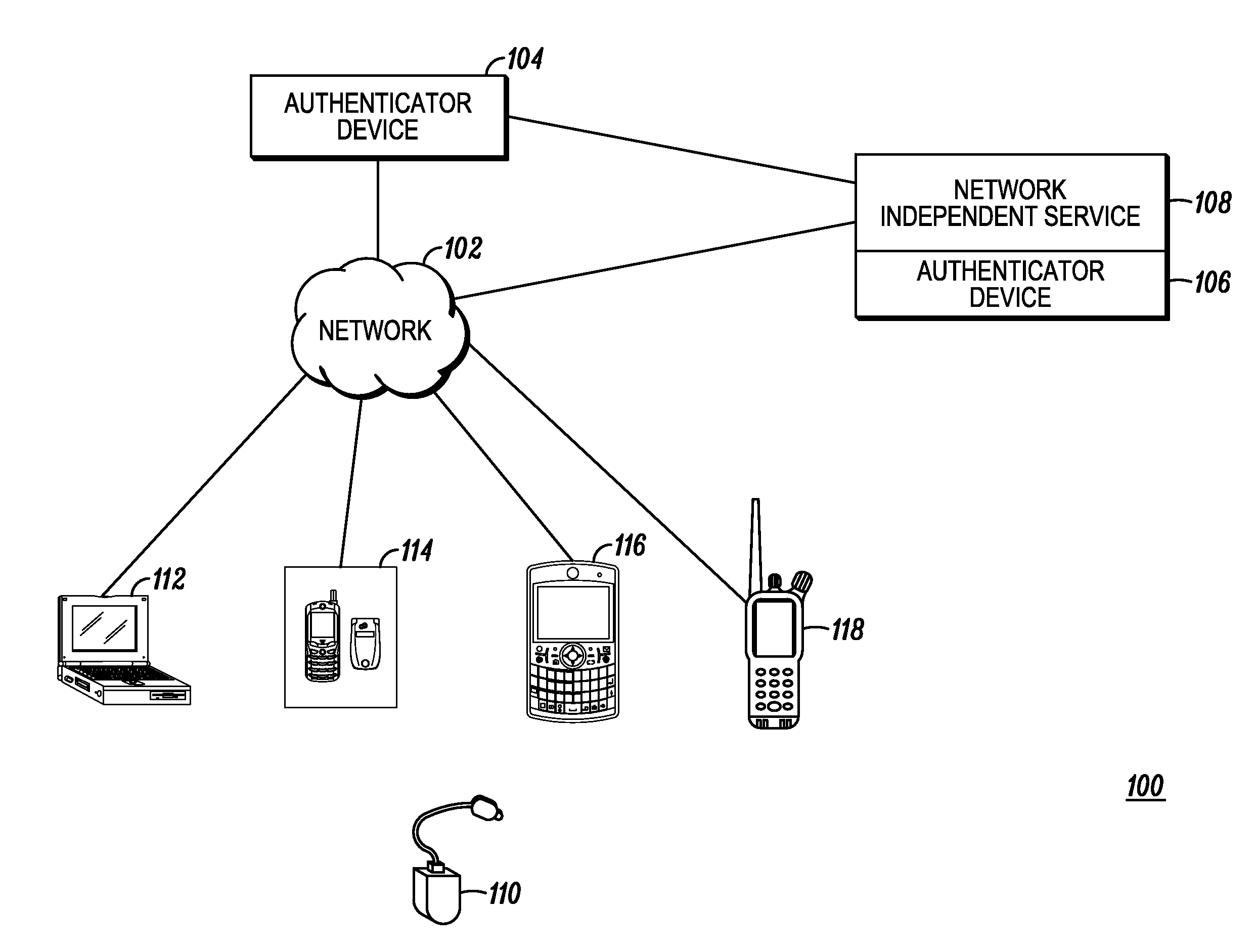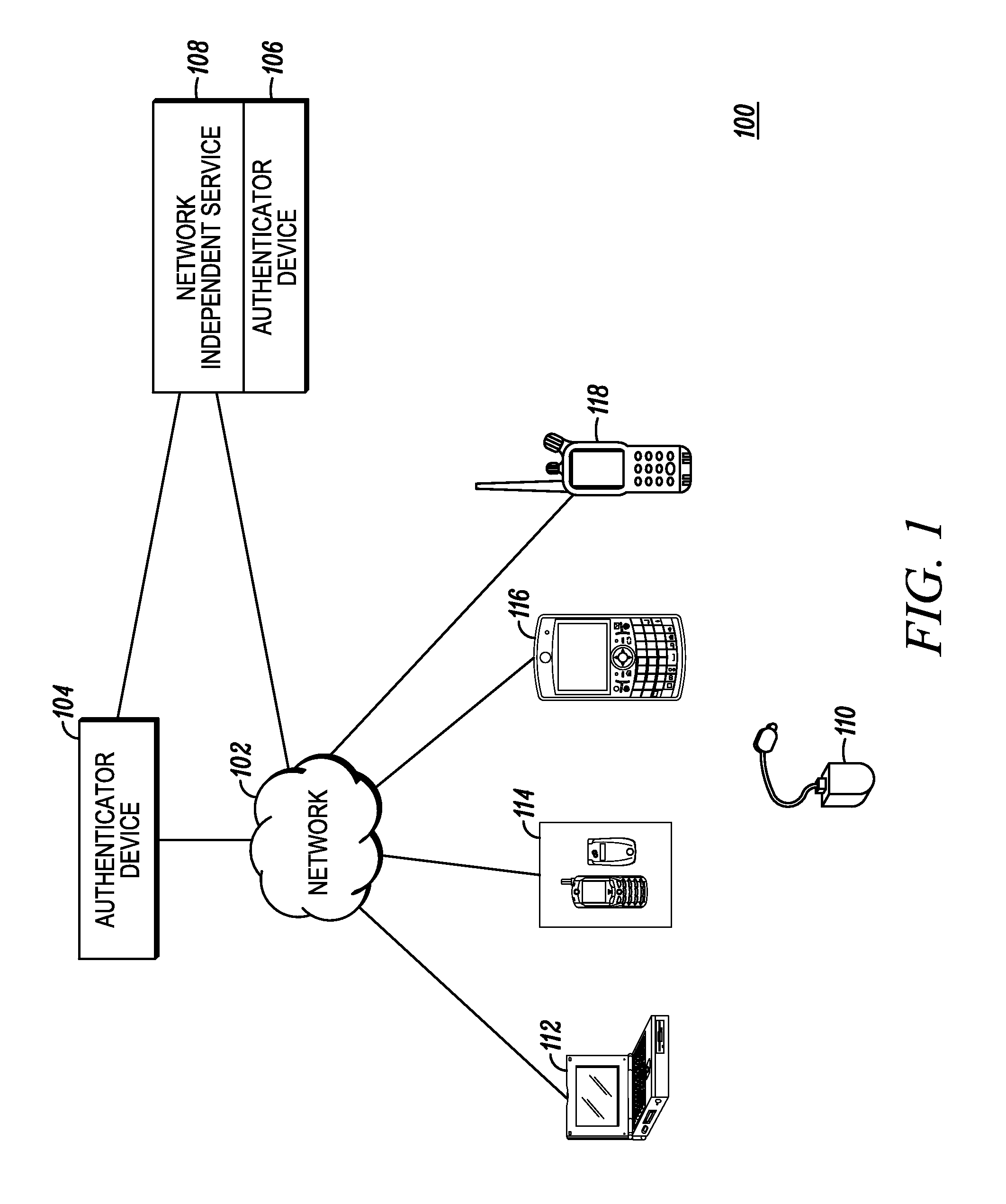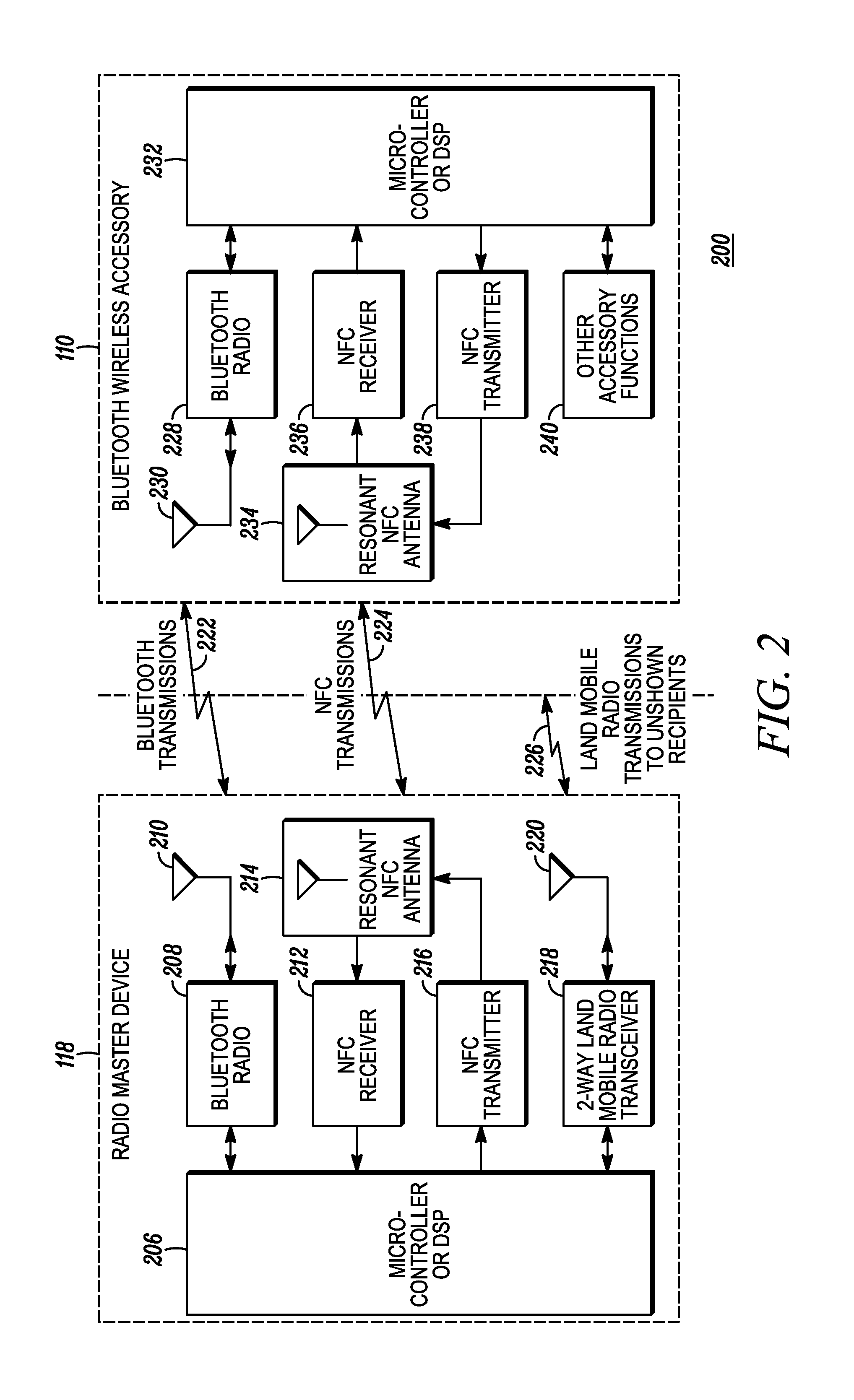Methods for authentication using near-field
a near field and authentication method technology, applied in the field of user or device authentication, can solve the problems of limited user interface or even no user interface, user login and password method is also susceptible to spoofing, and the user has to remember and enter information
- Summary
- Abstract
- Description
- Claims
- Application Information
AI Technical Summary
Problems solved by technology
Method used
Image
Examples
first embodiment
[0036]Turning now to the methods for performing authentication in accordance with the disclosed teachings, FIG. 4 is a flow diagram illustrating a method 400 of authentication using near field, in accordance with a The functionality illustrated by reference to method 400 is performed in two devices (e.g., device 118 (also referred to as device1) and device 110 (also referred to as device2), and could be performed concurrently with a pairing procedure between the devices. Devices 1 and 2 are presumably operated by the same user or have a common user due to the close distance required (i.e., six inches or less) in order for data to be transferred in a near-field non-propagating signal over a near-field link between the devices. Moreover, device1 is provisioned with an electronic serial number (ESN1), and device2 is provisioned with an electronic serial number (ESN2). An electronic serial number (ESN) is defined herein as a unique identification number embedded or inscribed on a micro...
second embodiment
[0041]FIG. 5 is a flow diagram illustrating a method 500 of authentication using near field, in accordance with a The functionality illustrated by reference to method 500 is performed in two devices (e.g., device 118 (also referred to as device1) and device 110 (also referred to as device2). Devices 1 and 2 are presumably operated by the same user or have a common user due to the close distance required (i.e., six inches or less) in order for data to be transferred in a near-field non-propagating signal over a near-field link between the devices.
[0042]In this embodiment, the user “touches” (502) device1 and device2. Device1 includes a random number generator, which generates (504) a random number (RAND1) that device1 sends to device2 in a near-field signal over a near-field link, which is received into the device2. Thus, the RAND1 is communicated using the near-field apparatus in the devices. Both devices 1 and 2 send (506) the same RAND1 to the authenticator device to use in authe...
third embodiment
[0044]FIG. 6 is a flow diagram illustrating a method 600 of authentication using near field, in accordance with a third embodiment, which is compatible with the APCO standards. The functionality illustrated by reference to method 600 is performed in the system shown in FIG. 7, for instance. This system includes a device1700 and a device2702. The system further includes an authentication center (AC) 704 and a zone controller (ZC) 706 included in the infrastructure of a network (e.g., network 102). Devices 1 and 2 are presumably operated by the same user or have a common user due to the close distance required (i.e., six inches or less) in order for data to be transferred in a near-field non-propagating signal over a near-field link between the devices. Moreover, device1 is provisioned with an electronic serial number (ESN1), and device2 is provisioned with an electronic serial number (ESN2).
[0045]The AC 704 is also provisioned with the ESN1 and ESN2 to facilitate authentication in ac...
PUM
 Login to View More
Login to View More Abstract
Description
Claims
Application Information
 Login to View More
Login to View More - R&D
- Intellectual Property
- Life Sciences
- Materials
- Tech Scout
- Unparalleled Data Quality
- Higher Quality Content
- 60% Fewer Hallucinations
Browse by: Latest US Patents, China's latest patents, Technical Efficacy Thesaurus, Application Domain, Technology Topic, Popular Technical Reports.
© 2025 PatSnap. All rights reserved.Legal|Privacy policy|Modern Slavery Act Transparency Statement|Sitemap|About US| Contact US: help@patsnap.com



